Ghost & Gravestones Trolley Tour
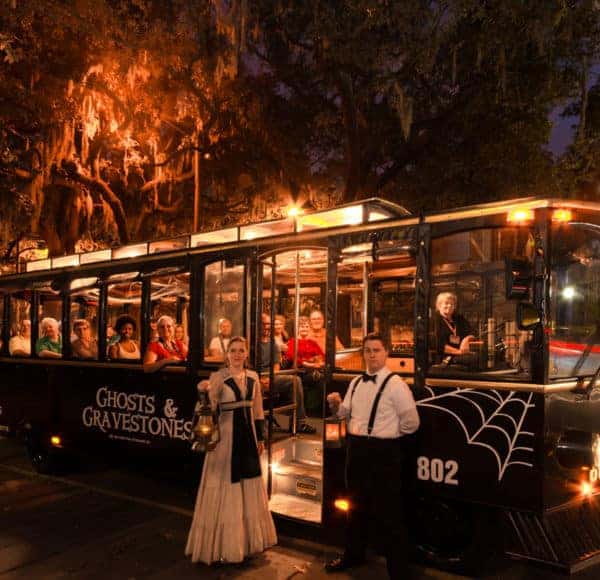
Your voyage will take you throughout the Savannah historic district, focusing on some of the most haunted sites, eerie legends and frightening residents. Your Ghost Host will entertain you with their expert storytelling and knowledge of all things “shadowy and sinister.” One never knows what one might encounter when you “cross-over” aboard Ghosts & Gravestones.
What You’ll Experience
- Hear all about Savannah’s darker side!
- Hear Tales No Other Tours Tell as Shadows Play Tricks on Your Mind
- EXCLUSIVE night-time entry into 2 of Savannah’s Most Haunted Venues
- FIRST is a stop at the Andrew Low House
- THEN on to the Perkin’s & Son’s Ship Chandlery
- Travel Past Ancient Cemeteries, Antebellum Mansions & Squares
- Drive by the Sites of Some of the Bloodiest Battlegrounds in History
- 100% Satisfaction Guarantee
Travel past ancient cemeteries, (those still standing and those that have fallen victim to the passage of time and progress), antebellum mansions, and lush squares ripe with live oaks dripping with Spanish moss. Drive by the sites of some of the bloodiest battlegrounds in history, where you may hear echoes of battles and the spirits that remain.
This tour is rated PG-13. No children under 6 allowed. An adult must accompany anyone under the age of 12.
Comfortable shoes are recommended so that you don’t become dead on your feet during the brief walking portions.
Prohibition Museum
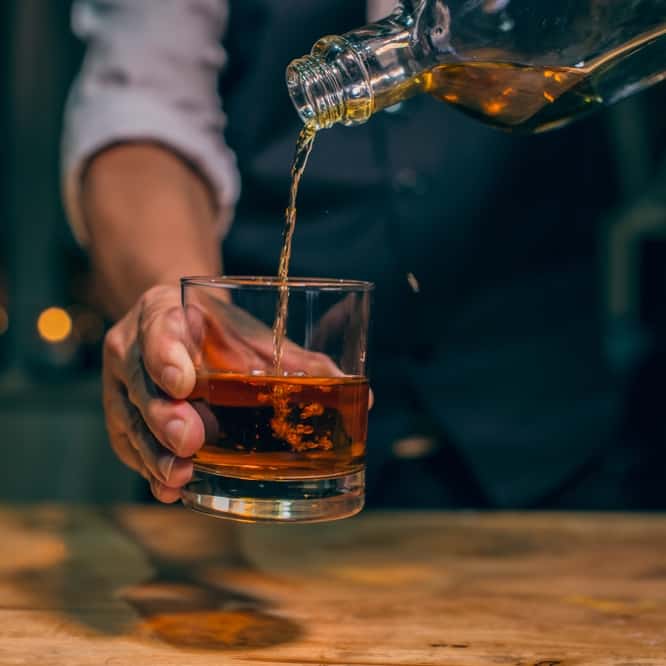
Located in Savannah’s popular City Market, the American Prohibition Museum is the first and only museum in the United States dedicated to the history of Prohibition. Highlighting an era of gangsters, rum runners, and flappers, this Savannah museum brings the roaring twenties to life with over 20 intoxicating exhibits and an authentic speakeasy. Featuring 21st century technology and immersive displays, this Savannah museum takes guests on a journey through the past to the early 1900s when anti-alcohol rallies swept the nation and the struggle with alcohol was brought to light.
Savannah Haunted Pub Crawl
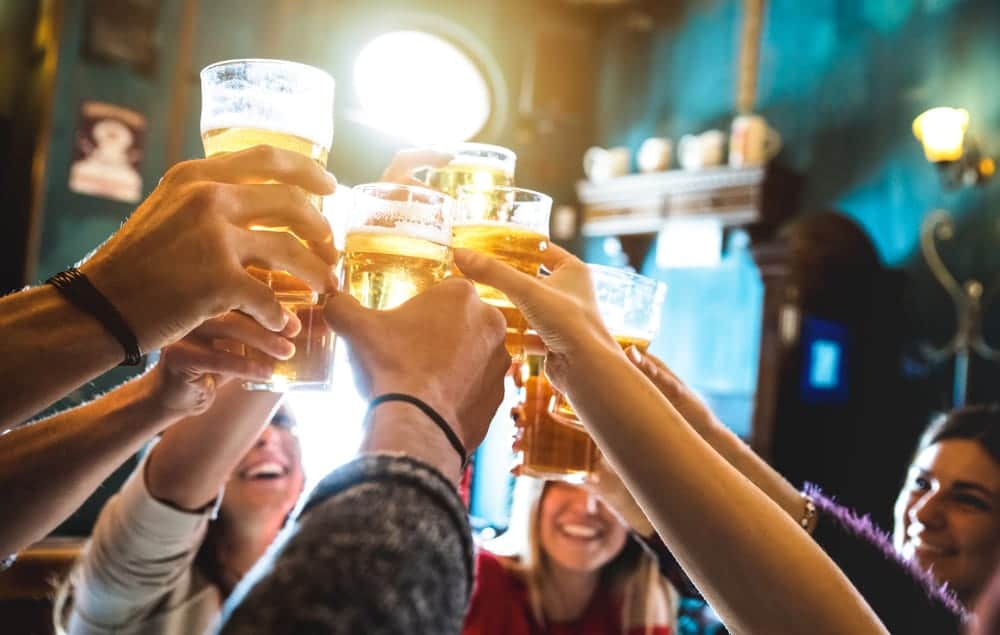
Tour Details:
- Duration: 2 hours.
- Alcohol friendly…of course.
- Ages 21+ only.
- This is a walking tour.
- Tour meets and departs at the entrance of Churchills Pub
What You Will Experience:
- Conde Naste and others agree that this is the best Pub Crawl in Savannah.
- Explore Savannah’s most historic and haunted bars and pubs. You will hear the ghost stories of these haunted locations while standing where the events happened.
- Perfect for date nights or meeting other people out for fun.
- Take advantage of Savannah’s open carry laws. Oh, you did not know? You can carry your alcoholic beverage on the streets, making a pub crawl truly… interesting.
- This tour is the most popular haunted pub crawl in Savannah.
Beyond Good & Evil Walking Tour
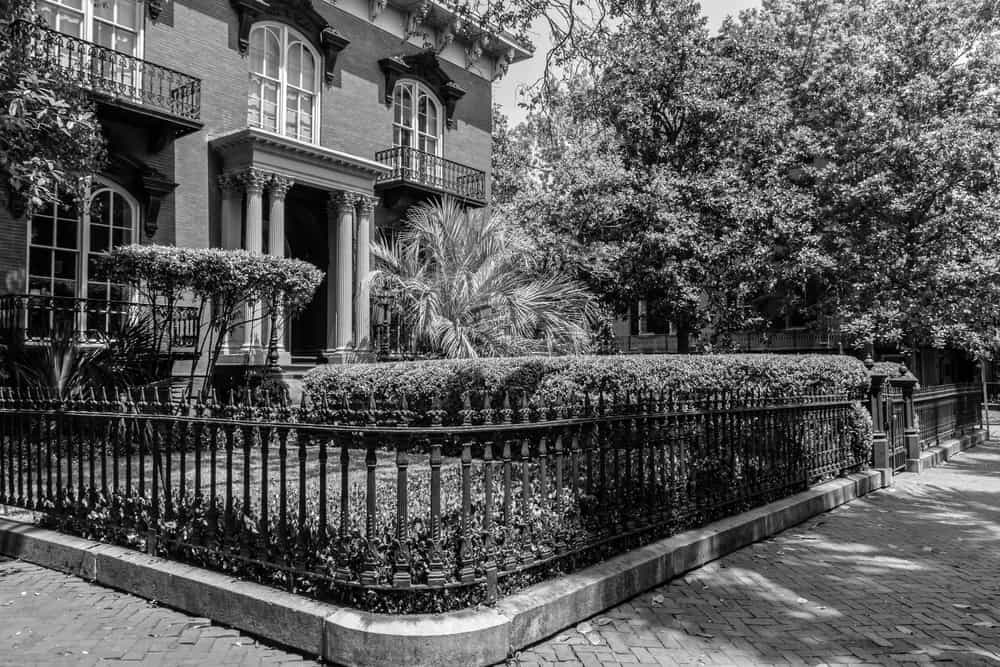
Tour Details:
- Adults only tour, ages 16+ only.
- Pet friendly tour
- Duration: 90-minutes.
Why You Should Take Tour:
- The Beyond Good and Evil Tour’s unique blend of humor, the macabre, voodoo, ghosts, local folklore, and legends have created Savannah’s most popular Ghost Tour.
- This tour contains mature language and themes.
- You’ll visit some of Savannah’s most stately homes, such as the Mercer-Williams House and 432 Abercorn. Oh, and a haunted cemetery or two, as well.
- An exciting journey into Savannah’s macabre haunted history.
- All of our tours are walking tours.
- Reschedule your tour for free if your plans change.
- Additional tour times may be available.
Haunted Pub Crawl

You will visit the most haunted bars in St. Augustine famous Historic District, many of them not known to tourists, while enjoying the finest drinks and the most engaging ghost stories that St. Augustine has to offer.
Relax while taking a ghostly stroll in the Ancient City – and still have fun while uncovering the haunted secrets of the city’s most haunted pubs and bars. Learn about Brothels, Pirates, and Demons – with a side of alcohol. This is a walking tour.
- Starting time: 8 pm however more tour times may be available.
- Adults only. All guests must be 21 years of age or older.
- Duration: 2 hours.
Ghosts Walking Tour (Family Friendly)
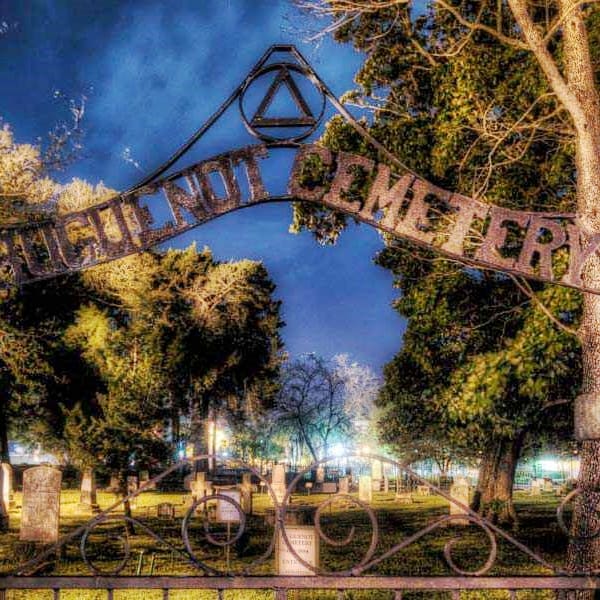
The Ghosts of St. Augustine Tour will take you, your family, and your friends to the most haunted places in St. Augustine.
If you are easily frightened, you may have a hard time sleeping the night after you join us. Stories of St. Augustine hauntings are downright spooky!
The Ghosts of St. Augustine Tour is the perfect ghost tour for families traveling to St. Augustine. You will be a hero to your kids for taking them on this entertaining tour.
- This is an all ages ghost walking tour.
- Starting time: typically at 8 pm.
- Duration: 90 minutes.
- Pet policy: Well behaved pets on leashes are allowed.
- Alcohol: not allowed
Golf Cart Guided History Tour
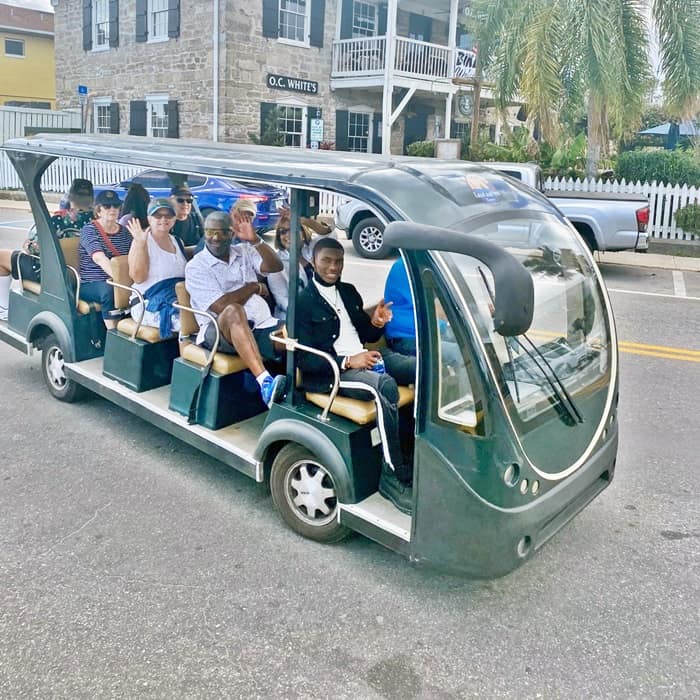
The perfect way to experience St Augustine for those that would like to keep walking to a minimum. The one hour narrated golf cart tour allows you to get up close to all the amazing landmarks the oldest city has to offer with live commentary from your city certified tour guide/driver.
Tour Details:
- Duration: 1 hour.
- Ages 3+ only.
What You Will Experience:
- You will board the golf cart at the Plaza de la Constitucion.
- After a short introduction, your tour will proceed by the waterfront with magnificent views of the Matanzas Harbor and the Bridge of Lions.
- The tour will pass in front of the Castillo de San Marcos on its way to The Mision Nombre de Dios site where the city founder, Pedro Menendez de Aviles, first arrived.
- You will then drive by Fountain of Youth, Magnolia Street and the Old Jail site.
- Once downtown, your tour will pass by the former Hotel Ponce de Leon, Alcazar and Casa Monica hotels and then by the Governors House and down Aviles Street ( Oldest street in the US). You will be in the oldest part of town where you will be able to observe examples of Spanish and British colonial architecture.
- Before returning to the Plaza, you will drive by the Flagler Memorial Presbyterian Church and the outside of the Hotel Ponce de Leon where the largest collection of in use Louis Comfort Tiffany stained glass windows collection may be observed.
Telling Elegies Walking Tour
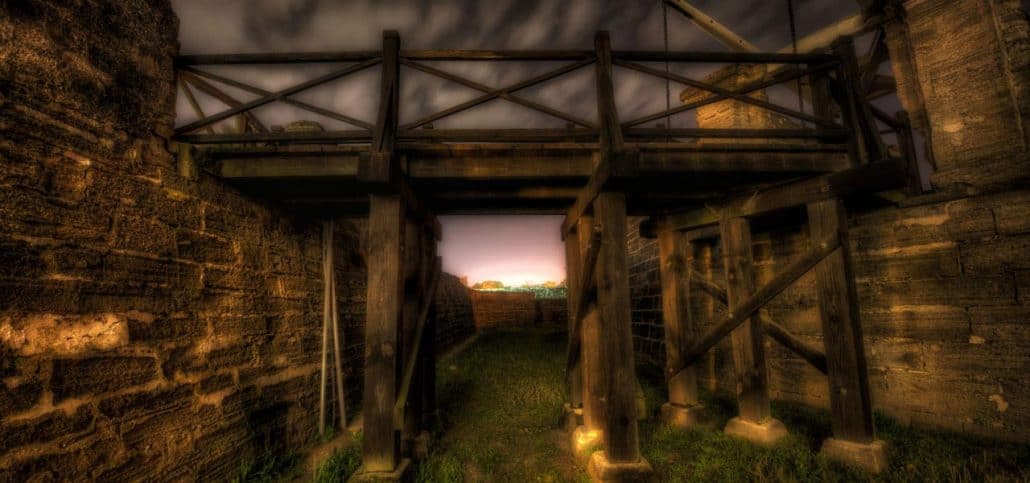
St. Augustine’s only adults only ghost tour!
The Telling Elegies Ghost Tour is a thought provoking experience that explores early St. Augustine’s dark and macabre haunted history. Delve deeper into the darkest hauntings of St. Augustine, Florida. From the oldest unsolved murder to the serial killings of the 1970’s….this tour explores the evil underbelly of the Ancient City. Get to know the darker side of human nature….you may even leave the tour questioning your own being. This tour contains mature themes and languages.
- Tour duration: 90 minutes.
- Tour times vary. Click the “See Available Tour Times” button to view availabilities.
- Adults only tour for guests 16 and older.
- Pet policy: pets are allowed.
- Alcohol policy: not allowed on this tour.
Shrine Our Lady of La Leche
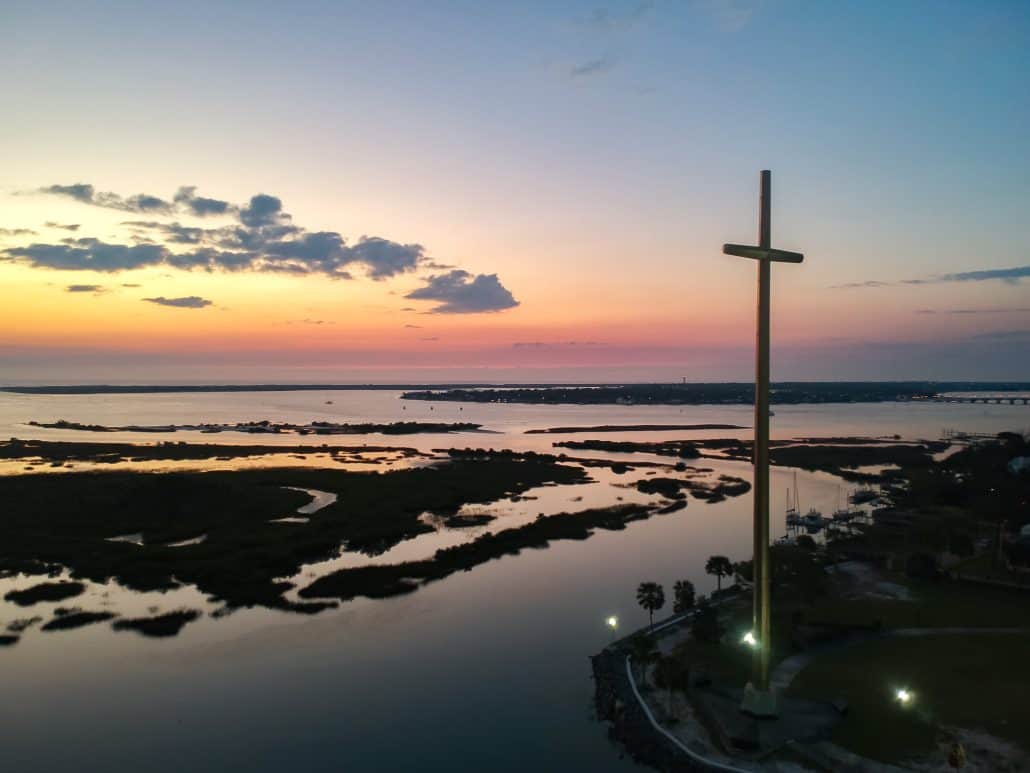
On September 8, 1565, five ships sailed into a small cove on the coastline of what was known to the Spanish as La Florida. Under the command of General Pedro Menendez de Aviles, they came to the New World from Spain sent by King Philip II. They arrived in hopes of establishing a colony, securing the land for Spain, and most importantly, to convert the native American Indians to Christianity. Father Francisco Lopez de Mendoza Grajales, recorded the days events in his diary:
On Saturday the eighth the General landed with many banners spread, to the sounds of trumpets and the salutes of artillery. As I had gone ashore the evening before, I took a cross and went to meet him, singing the hymn Te Deum Laudamus. The General, followed by all who accompanied him, marched up to the cross, knelt and kissed it. A large number of Indians watched these proceedings and imitated all that they saw done.
Following Menendezz veneration of the Cross, thus proclaiming this land in the name of God (Nombre de Dios) Father Lopez celebrated Mass at a rustic altar made of wood. The sky served as the roof for what was the first parish Mass in what is now the United States. It was on this sacred ground that the Spanish settlers would begin devotion to Our Lady of La Leche, Nuestra Senora de La Leche y Buen Parto, Mary nursing the infant Jesus. In the early 1600s, the Spanish settlers of St. Augustine established the first Shrine to the Blessed Virgin Mary in the United States.
Today, more than 450 years later, an image of Our Lady of La Leche – Our Lady of the Milk and Happy Delivery – graces a small mission chapel in the heart of what is lovingly referred to as the sacred acre. Pilgrims come from all parts of the world to pray for her powerful intercession. They pray for fertility, for the health of their children, for safe delivery of those expecting. Their prayers continue to be answered, and many return in thanksgiving to share with us their stories. We invite you to come join us – to stand on holy and sacred ground where our story of the conversion of hearts and the graces of Mary continues.
Governor’s House Cultural Center & Museum
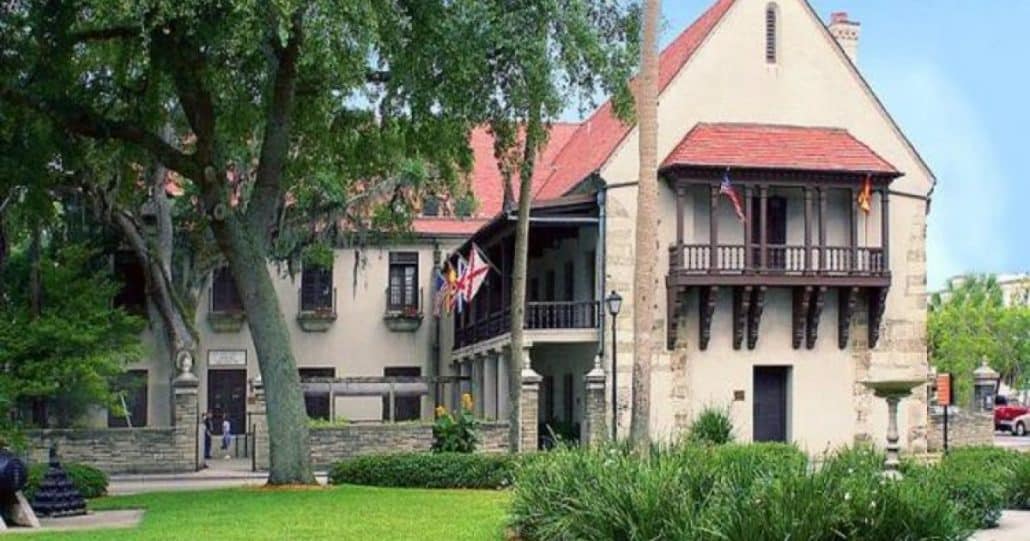
Governors House Cultural Center and Museum is located in the heart of historic downtown St. Augustine at the intersection of King Street and St. George Street overlooking the historic Plaza de la Constitucion. The building, historically known as Government House, has a long and fascinating history since the site has been home to several government offices since 1598. An exhibit in the grand lobby follows this history including a timeline to present-day.
Today, the Governors House hosts a public museum, visitor information desk, event rental space, and academic facilities in support of the University of Florida. Academic use of the building includes an archaeology laboratory in collaboration with Flagler College, Governors House Library research collection and digitization lab, and Preservation Institute St. Augustine (PISA).

